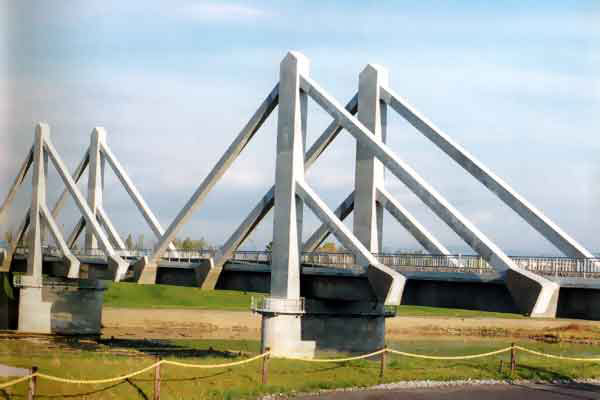
Photograph source:「Concrete Bridges in Hokkaido Vol4」(Association for Civil Engineering Technology of Hokkaido Concrete Research Committee)
| Structure name | Shin-Usyubetsugawa Bridge |
|---|---|
| Structure type | PC 3-span continuous cable-stayed bridge |
| Structural factors | Length of bridge 154.8m Span length 48.15+57.0+48.15m |
| Client | Hokkaido Railway Co.,LTD. |
| Designer | Japan transportaition Consultants,Inc. |
| Contractor | Shimizu Co. |
| Location | Asahikawa city |
| Route name | JR Soya Line (between Nagayama and kitanagayama) |
| Completion date | 1997. |
| Overview | This bridge is a PC cable-stayed railway bridge that crosses a diversion channel of the Ushishubetsu River, and serves as a landmark of the region. The features of this bridge are:
This bridge was awarded the 1998 Japan Society of Civil Engineers Hokkaido Branch Technology Prize. |
Reference:「Concrete Bridges in Hokkaido Vol4」(Association for Civil Engineering Technology of Hokkaido Concrete Research Committee)

